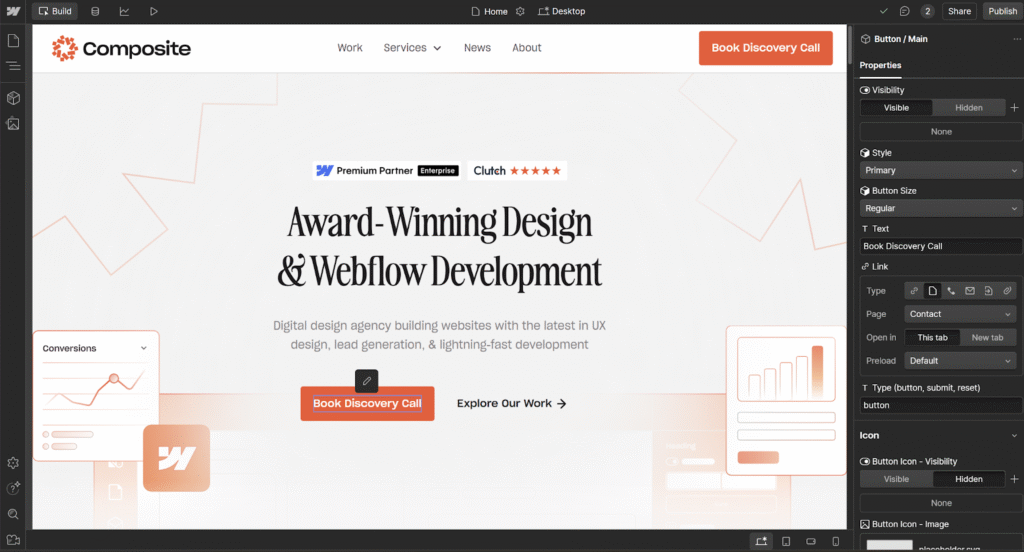For years, building a website meant checking the usual boxes: mobile responsiveness, strong SEO, fast load times. But today’s landscape is more complex and more intelligent.
From AI agents parsing your content to investors analyzing brand polish through page performance, your site now has to do more than just look good. It has to communicate structure, scalability, and credibility to both humans and machines.
So what should tech-forward brands focus on as they build or rebuild their digital presence?
UX That Communicates Clarity and Confidence
User experience has always mattered. But now, it’s a signal to customers and machines. Well-structured UX communicates business readiness and trustworthiness.
- Clear navigation and hierarchy means faster parsing by LLMs and better user flow
- Modular layout systems bring scalable updates without technical debt
- Consistency across pages indicates trust and clarity for both people and agents
If your site looks messy or feels disjointed, it’s not just bad for conversion. It can get misread entirely, breaking the trust you’ve started building with the user.
SEO Still Matters, But It’s Evolving
SEO isn’t dead. It’s just evolving. Structured data, internal linking, and semantic HTML still drive search performance, but they’re also becoming part of a bigger picture: AX (Agent Experience).
Agents, like Google’s SGE or ChatGPT plugins, rely on structured, logical content. That means:
- Using proper headings (H1, H2, H3) in clear order
- Including internal links between related content
- Maintaining clean URLs and canonical tags
- Avoiding cluttered designs or inaccessible overlays
These tactics still help traditional SEO, but they also lay the groundwork for AI visibility. If a machine can read and understand your content, it is more likely to use it in recommendations.
Don’t Forget Accessibility
Accessibility isn’t just a moral or legal requirement. It’s a structural advantage. Designs that support screen readers often work better for AI models, too.
Use semantic HTML, label forms properly, write good alt text, and ensure your site can be navigated with a keyboard. These small changes lead to bigger gains—in reach, equity, and long-term usability.
To learn more, read Accessible by Design: How AX and Accessibility Overlap.
AX: The Agent Experience
AX (Agent Experience) is emerging as a new lens for site optimization. Just as we once optimized for crawlers, we now need to think about how AI agents parse, understand, and represent your site.
Agents don’t scroll. They scan code. They don’t click. They parse.
That means your site needs to:
- Be structured semantically
- Avoid bloated scripts and unnecessary plugins
- Present content clearly and logically
- Provide files like robots.txt and llms.txt to guide models
Pro tip: While not all large language models follow llms.txt today, the standard is gaining traction, and it’s a low-effort way to future-proof your site for agent visibility.
Final Thoughts: Build for Tomorrow, Not Just Today
Your website is no longer just a digital storefront. It’s a business signal, a parsing target, and—if you do it right, a strategic asset.
If you’re in the middle of a rebrand or platform migration, now’s the time to build smarter. Think modular. Think accessible. Think AI-ready.
And if you’re looking for a platform built for the future?
Webflow offers the flexibility to design responsively, structure your CMS semantically, and optimize performance without relying on bulky plugins or custom code. It’s a developer-grade platform that empowers design and marketing teams to build smarter, scalable experiences—faster.
We create powerful, insightful content that fuels the minds of entrepreneurs and business owners, inspiring them to innovate, grow, and succeed.
